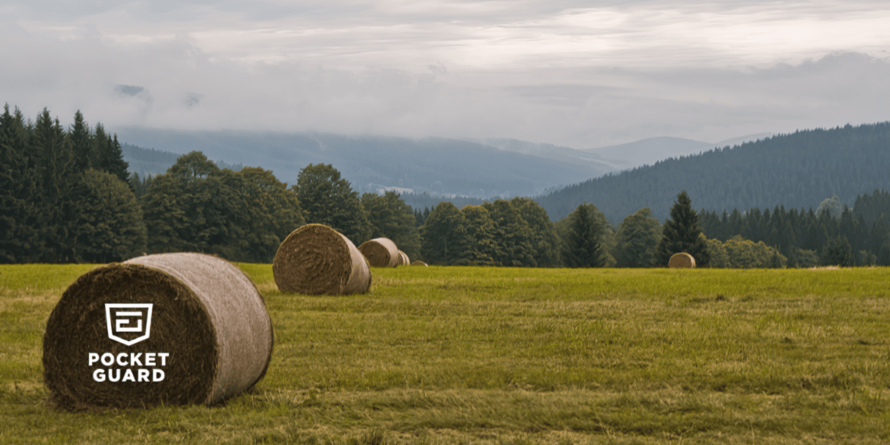8 edible landscaping ideas to save you money and a flat, manicured lawn. The plain sea of green is so ubiquitous that most people never consider that there is anything else to do with this space. For a country that is built on efficiency and results, it seems strange that we have universally chosen such a high maintenance solution that gives absolutely nothing back.
Maybe this is why so many people are starting to buck the trend and plant berry bushes, herb borders, and even trellises covered in climbing peas or squash vines. Instead of wasting their yards on grass and shrubbery, they are growing food for their families.
This is known as edible landscaping: making a decorative landscape from edible foods. This can include anything from planting fruit trees to ornamental lettuces. And you don’t need to fill your yard with fruits and vegetables. Even a small window box planter with radish can be a beautiful additional. Through edible gardening, you not only make your yard unique and beautiful, you can also put healthy food on your table as the same time.
There are many benefits of growing your own produce. The first is in the farm fresh flavor. Many children have never even tasted what nature intended a tomato to taste like. Even strawberries and carrots seem to have lost their natural sweetness.
Beside enjoying better tasting food, a typical garden can produce two to three pounds of fresh produce per square foot. Even at reasonable prices, a 10×10 garden can produce nearly $700 in a season. Considering that the costs associated with a garden that size would be in the 10’s of dollars, it is a great way to save money.
Most people spend several hours per week mowing, watering, and fertilizing their lawns to keep that looking their best. With editable gardening, most of the work is done upfront and then you just let it grow. Planting a plum tree can require a lot of work the first year, but after that it only requires a few hours per year to care for — mostly spent picking the juicy plums throughout the late summer.
You can also plant whatever you like in your garden and enjoy a variety of foods and flavors. When you make a salad, most people think of iceberg lettuce and maybe some tomatoes. Did you know that there are hundreds of types of lettuce? Growing your own food lets you explore all the types of food that mother nature has provided for our bodies to eat, not just what factory farms decide to grow.
Another advantage is that growing or own food lets you go green by reducing waste and protecting the environment. Because it is grown literally feet from where you will eat it, there is no need for transportation and you can avoid the using pesticides, herbicides, and fertilizers that are getting into our water supply.
Finally, growing food is a lot more fun than growing grass. The goal with grass is to stop it from growing. The goal with edible crops is to watch it turn from seeds into a meal right before your eyes. If you have children, it is a great way to teach them about the cycle of life, spend time outside and reduce stress.
So, how do you do it? The first rule is to start small. If most people turned their entire yards into edible food spaces, they produce too much food for their families. So, especially in the beginning, it is important to start small.
There are eight types of food that can be incorporated into any garden:
Rosemary, thyme, and oregano can be grown in a small herb bed near your house in on a patio. You may also choose to put in a small planter beside your mailbox with basil, chives or oregano mixed with some flowers.
A variety of green and red lettuce, radishes, and other salads can enhance a blossoming bed. Rainbow chard or red-jewel cabbage are esthetically beautiful in their own right.
Vegetables like rhubarb, asparagus, and Jerusalem artichoke, are perennial. This means that you only need to plant them once and they will continue to grow year after year, saving you the trouble of planting year-after-year.
Not everything that is edible is is a leaf or a fruit. Nasturtiums, violas, pansies, borage, and calendula are all edible blossoms that enhance any delicious salad. Daylily plants have tasty buds, blossoms, and tender shoots that can be picked. Or, you can dig them up to harvest the edible tubers.
Strawberry are another low maintenance, perennial supply of deliciousness. Small Alpine strawberries love the shade and do well in wooded areas that grass struggles in.
Any vining plant becomes a center piece on a decorative trellis. A popular option is scarlet runner beans, because they’re just as good to look at as they are to eat. Peas, squash, tomatoes, and grapes can all be grown to provide convenient access to low hanging fruit.
Fruit and nut trees look good, and provide shade as well meals. If you want something that you can’t find in stores pawpaws, medlars, and serviceberries are hardy and tasty options. If you are less adventurous, the typical apples, peaches, and pears make a beautiful feature to any yard.
It is easy to replace ornamental shrubs and hedges with fruit-bearing varieties, such as blueberries, currants, gooseberries, or bush cherries.
Like most things worthy doing, turning your dream into a meal can take a lot of hard work. But the moment you sit down and enjoy your first home cook meal, it all becomes worth it.
“No time for breakfast, Honey. I’ll pick something on my way to the car.”
Featured image credit: www.flickr.com
Oct 13, 2015
Oct 13, 2015



